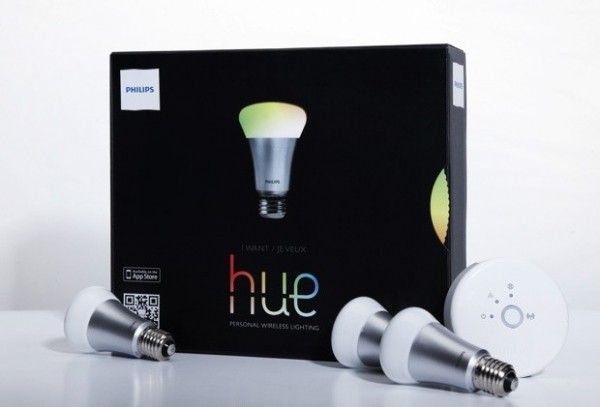Philips is jumping into the smartphone-controlled LED lighting market with a new system dubbed hue. Initially available through Apple Stores only, hue light bulbs screw into a regular ES fitting and otherwise work like a standard light bulb, but they use a bridge plugged into your router to create a mesh network based on the ZigBee LightLink wireless standard, and allow things like personalized lighting settings and timers.
Inside each bulb are 11 LEDs in three different colors – green, red, and blue – that combine to create up to 16 million colors. Users can choose from one of four preloaded "LightRecipes" tailored for specific moods – relax, read, concentrate, and energize – or set their own custom templates. You can even use a photo from your iPhone or iPad to pick a color, and with an array of multiple bulbs, assign each a different color.
Using the compatible iOS app users can program specific times when bulbs should switch on, as well as dimming lights, and controlling them individually or in groups either either locally around the home or anywhere with an internet connection. An Android version of the companion app will be launching in December.
The starter box contains three bulbs (600 lumen or 50 watt equivalent) plus the base station and is priced at $199, while individual bulbs are priced at $59. They're hardly a cheap replacement to standard lightbulbs, but they're also not as expensive as some professional installations or even the company's LivingColors lamps.

The Philips hue lighting system will take on the LIFX Kickstarter project, which has already raised more than $1.3 million for their dimmable and multi-color lightbulbs and is expected to ship in March 2013. Greenwave Reality also released a Wi-Fi controlled LED lighting kit last week, which can be controlled (sans color adjusting) via smartphones and tablets, and is available through distribution and utility partners only.